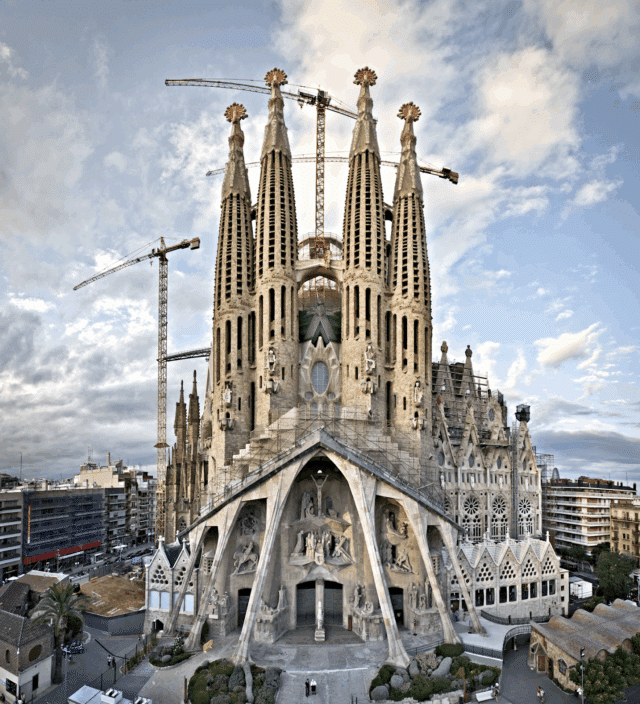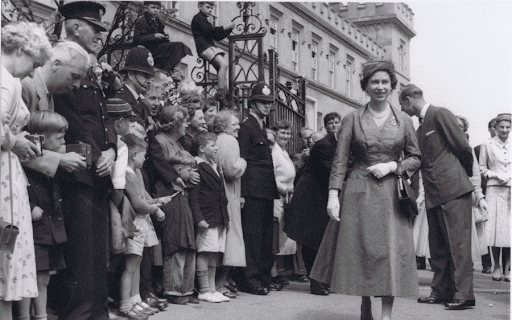Planting trees you’ll never see
In Monday’s assembly, we celebrated one of the most extraordinary architectural projects in human history, the Sagrada Familia in Barcelona.
The building is most closely associated with the architect Antoni Gaudí, who took over the project in 1883 when he was just 31 years old. Gaudí was a deeply religious man who saw architecture as a way to bring people closer to God. His designs focused on meaning, symbolism, and natural beauty and – unlike many architects of his time – Gaudí did not rely on straight lines and simple geometric shapes. Instead, he drew inspiration from trees, flowers, shells, and even honeycombs to create fluid and organic forms that would bring his buildings to life.
He wanted the interior of the Sagrada Família to feel like a forest – the enormous columns inside the basilica look like tree trunks, branching out at the top to support the ceiling in the same way that branches hold up a canopy of leaves. Light filters in through colourful stained-glass windows, casting patterns on the walls like sunlight streaming through trees. Gaudí wanted people to feel as though they were stepping into a sacred space that reflected the beauty of the natural world.
He knew the Sagrada Família would take far longer to build than his own life would last. He therefore left behind highly detailed models and drawings, hoping that future generations of architects and builders would carry on his work.
Gaudí dedicated the last 12 years of his life to the project to the extent that he lived on-site in his workshop. He died in 1926 at the age of 73, by which time only around 15% of the church had been completed. During the Spanish Civil War in the 1930s, many of his original plans and models were destroyed by fire, leaving subsequent architects to painstakingly reconstruct his vision using the fragments that survived
For many years, construction moved slowly as it was funded entirely by private donations, but – just as Gaudí envisaged – the advantage of a project that takes so long to complete is that technology is invented that can bring it to fruition eventually. One of the most striking examples is the construction of the central towers. The tallest of these, dedicated to Jesus Christ, will reach 172.5 metres upon completion, making it the tallest church in the world. This was one of Gaudí’s boldest ideas, that he knew was impossible at the time he was alive.
Every part of the Sagrada Família has a deeper meaning. The basilica has three grand façades, each telling a different part of the Christian story. The Nativity Façade was the only one Gaudí saw finished in his lifetime. Covered in sculptures of animals, plants, and humans, it celebrates Christ’s birth; the Passion Façade is stark and dramatic, representing the suffering and death of Jesus; and the Glory Façade, which is still under construction, symbolising the journey to heaven.
Inside, there are 18 towers in total, each representing a different religious figure. The tallest is dedicated to Christ, surrounded by towers for the Virgin Mary, the four evangelists, and the twelve apostles.
The story of the Sagrada Familia highlights the value of perseverance. Gaudí knew he would never see his masterpiece finished, but he devoted his life to it, trusting that others would continue after him. It also serves as an inspirational reminder of how tradition and innovation can join together to produce something truly remarkable. Gaudí’s ideas were rooted in ancient religious and artistic traditions, but he also imagined a world of the future that didn’t yet exist in his designs. In many ways, our school is a good example of this – our values and even some of our buildings are rooted in history, but we also know that many of you will do jobs that don’t exist yet at some point in your lives. And last but not least, it teaches us that usually, the very best things in our world take a long time and a lot of work. When asked about why he was comfortable with this, Gaudí famously said, referring to God, that
‘My client is not in a hurry.’
After over 140 years, the building is finally nearing completion. If achieved this year, it will coincide with the 100th anniversary of Gaudí’s death, which would be a fitting tribute to a man who dreamed so far ahead of his time that it took more than a century for the world to catch up.
Have a great weekend
Best wishes
Michael Bond





